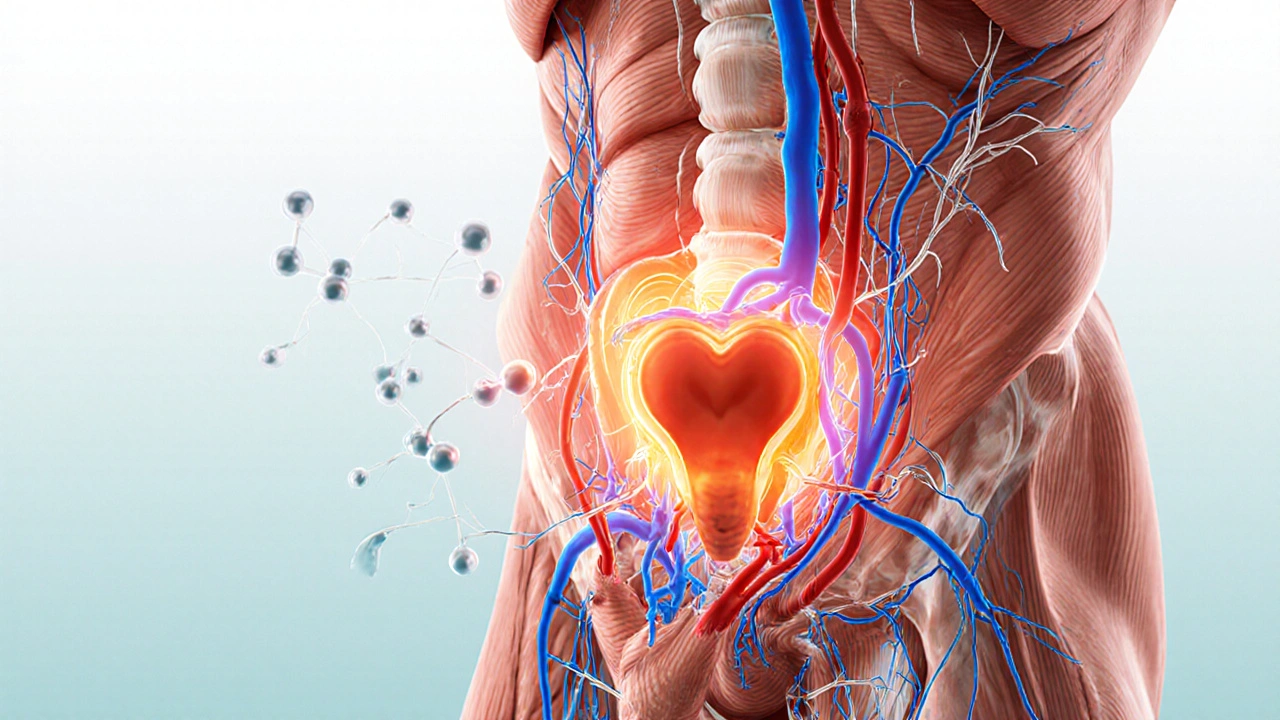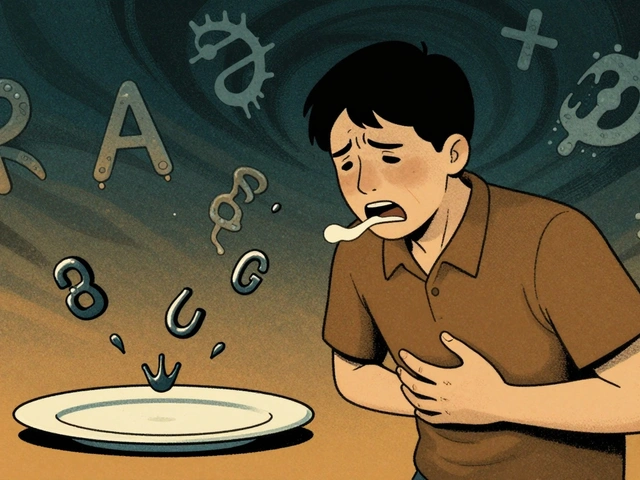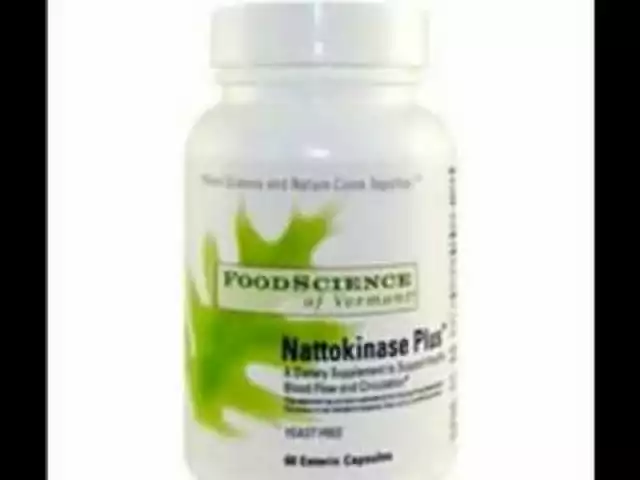When a man experiences erectile dysfunction and premature ejaculation at the same time, the problem feels like a double‑whammy. It’s not just a matter of embarrassment; the two conditions often share causes, stress each other, and can make treatment trickier. This article pulls back the curtain on how they intersect, why the overlap matters, and what practical steps you can take to get back on track.
Quick Takeaways
- Both erectile dysfunction (ED) and premature ejaculation (PE) are forms of sexual dysfunction that can stem from physical, psychological, or lifestyle factors.
- Common roots include vascular health, hormone levels, nerve function, and stress or anxiety.
- Treating one condition often improves the other, especially when a holistic approach is used.
- First‑line therapies: PDE5 inhibitors for ED, behavioral techniques or SSRIs for PE; combined plans are possible.
- Open communication with a partner and a healthcare provider is the fastest way to a tailored solution.
What Exactly Are ED and PE?
Erectile Dysfunction is the persistent inability to achieve or maintain an erection sufficient for satisfactory sexual performance. It’s a condition that affects roughly 30% of men over 40, according to recent epidemiological surveys.
Premature Ejaculation is ejaculation that occurs sooner than a man or his partner would like, often within one minute of penetration. Studies estimate PE affects between 20% and 30% of adult men worldwide, making it the most common male sexual complaint.
Both are classified under the broader umbrella of sexual dysfunction, a term that covers any problem that interferes with the sexual response cycle.
Shared Biological Threads
It’s tempting to think of ED and PE as entirely separate issues, but they often share physiological pathways.
- Vascular health: Adequate blood flow is the fuel for an erection. Conditions like atherosclerosis, hypertension, or diabetes can restrict flow, leading to ED. Poor vascular tone can also reduce penile sensitivity, pushing a man to ejaculate quickly as a subconscious coping mechanism.
- Hormone balance: Low testosterone levels can dampen libido, making it harder to stay aroused long enough for controlled ejaculation.
- Nerve integrity: The pudendal nerve and autonomic fibers orchestrate both erection and ejaculation. Neuropathy from chronic alcohol use or spinal injuries can impair both functions.
- Psychological stress: Anxiety spikes adrenaline, which contracts pelvic muscles and shortens the ejaculatory latency. The same anxiety can also trigger a “performance” mindset that sabotages erection maintenance.
Because these factors overlap, it’s common for men to present with both problems at once.
How One Condition Can Trigger the Other
Imagine you’re in bed and can’t get an erection. The frustration builds, anxiety spikes, and you might rush the act once you finally do get aroused-leading to premature ejaculation. Conversely, if you consistently ejaculate too fast, you may feel insecure about maintaining an erection, which can manifest as ED.
This feedback loop is why clinicians stress a “dual‑assessment” during the first visit: ask about erection quality, latency time, and psychological factors together.

Diagnosing the Overlap
There’s no single test that nails both conditions, but a systematic approach helps.
- Medical history: Review cardiovascular health, diabetes status, hormonal issues, and medication side‑effects (e.g., antihypertensives, antidepressants).
- Sexual questionnaire: Tools like the International Index of Erectile Function (IIEF) and the Premature Ejaculation Diagnostic Tool (PEDT) provide scores that quantify severity.
- Physical exam: Assess penile blood flow with a Doppler ultrasound if vascular disease is suspected.
- Laboratory tests: Check fasting glucose, lipid panel, and total testosterone.
- Psychological screening: Evaluate anxiety, depression, or relationship issues using brief scales (e.g., GAD‑7, PHQ‑9).
Putting all the pieces together paints a clear picture of what’s driving both ED and PE in a particular individual.
Treatment Strategies That Hit Both Targets
Because the root causes often intersect, many interventions improve both erection quality and ejaculatory control.
Medication Options
- PDE5 inhibitors (e.g., sildenafil, tadalafil) boost nitric oxide pathways, enhancing blood flow and helping achieve firmer erections.
- Selective serotonin reuptake inhibitors (SSRIs) such as dapoxetine are commonly prescribed for PE because they lengthen the ejaculatory latency period.
- In some cases, a low‑dose SSRI combined with a PDE5 inhibitor can address both problems without excessive side‑effects.
Behavioral and Physical Techniques
- Stop‑Start method: During sex, pause stimulation before reaching the point of inevitability, then resume. Over time, this trains the nervous system to delay ejaculation.
- Squeeze technique: Similar to stop‑start but involves applying pressure to the penis to reduce arousal.
- Pelvic floor therapy: Strengthening the bulbocavernosus and pubococcygeus muscles can improve erection rigidity and give better control over ejaculation.
Lifestyle Tweaks
- Regular aerobic exercise (150minutes/week) improves cardiovascular health, directly benefiting penile blood flow.
- Weight management lowers the risk of diabetes and hormonal imbalance.
- Limiting alcohol to moderate levels (<2 drinks/day) reduces nerve desensitization.
- Practicing stress‑reduction techniques-mindfulness, deep‑breathing, or counseling-can break the anxiety‑induced loop.
Psychological Support
Sex therapy, cognitive‑behavioral therapy (CBT), or couples counseling can address performance anxiety, communication gaps, and relationship tension. When both partners understand the physiological basis, shame fades and teamwork improves.
When to Seek Professional Help
If any of the following apply, it’s time to book an appointment:
- Symptoms persist longer than three months.
- You have chronic health conditions (heart disease, diabetes) that could be contributing.
- Medications you’re taking list sexual side‑effects.
- Relationship strain or emotional distress is building.
A urologist, endocrinologist, or sexual health specialist can tailor a combined treatment plan. Remember, there’s no shame-these issues are common and treatable.
Comparison Table: Key Differences & Overlaps
| Aspect | Erectile Dysfunction | Premature Ejaculation |
|---|---|---|
| Primary symptom | Inability to achieve/maintain erection | Ejaculation sooner than desired |
| Typical latency | Not applicable | ≤1minute (often <30seconds) |
| Common physiological causes | Vascular disease, low testosterone, nerve damage | Increased penile sensitivity, reflex‑arc hyperactivity |
| Psychological triggers | Performance anxiety, depression | Anxiety, relationship pressure |
| First‑line meds | PDE5 inhibitors (sildenafil, tadalafil) | SSRIs (dapoxetine), topical anesthetics |
| Impact on partner | Reduced sexual satisfaction, intimacy issues | Frustration, desire for quicker control |

Potential Pitfalls & How to Avoid Them
Self‑medicating without a diagnosis can mask one problem while worsening the other. For example, taking an over‑the‑counter supplement that boosts blood flow might improve erection but does nothing for premature ejaculation, leading to continued frustration.
Ignoring mental health is a common mistake. Even if a medication fixes the physical side, lingering anxiety can keep the cycle alive.
Skipping follow‑up appointments means you won’t know if a therapy is effective or if dosage adjustments are needed. Most clinicians recommend re‑evaluating after 4-6 weeks.
Future Directions in Research
Scientists are exploring combined oral agents that target both nitric‑oxide pathways and serotonin modulation in a single pill. Early trials show promising results for men with concurrent ED and PE, but larger studies are still pending. Gene‑therapy approaches aimed at restoring endothelial function could eventually address the vascular root of both conditions.
Putting It All Together: A Sample Action Plan
- Schedule a health check‑up: Get blood work for glucose, lipids, and testosterone.
- Start a low‑impact cardio routine: 30minutes of brisk walking, five days a week.
- Discuss medication options: Ask your doctor about a PDE5 inhibitor and whether a short‑course SSRI might help.
- Practice the stop‑start method: Use it during solo sessions first, then with a partner.
- Book a session with a pelvic therapist: Focus on strengthening the bulbocavernosus muscle.
- Set aside weekly check‑ins with your partner: Talk openly about progress and any lingering concerns.
- Re‑evaluate in six weeks: Track erection quality and ejaculation latency; adjust treatment as needed.
The goal isn’t a quick fix but a sustainable improvement that restores confidence and intimacy.
Frequently Asked Questions
Can medication for ED make PE worse?
Most PDE5 inhibitors don’t directly affect ejaculation timing. However, a sudden increase in erection firmness can heighten sensation, which for some men leads to faster climax. If that happens, adding a low‑dose SSRI or using behavioral techniques usually balances things out.
Is it normal for younger men to have both ED and PE?
While age‑related vascular decline is a common driver of ED, younger men can experience both conditions due to anxiety, hormone imbalances, or lifestyle factors like smoking and excessive alcohol. A full medical evaluation helps pinpoint the cause.
Can lifestyle changes alone fix both problems?
In many mild cases, improving diet, exercising regularly, reducing stress, and quitting smoking can significantly boost erectile function and lengthen ejaculatory latency. For moderate to severe cases, adding medication or therapy speeds recovery.
Do I need to tell my partner about my condition?
Open communication builds trust and reduces performance pressure. Most couples find that discussing the issue leads to collaborative problem‑solving, which itself improves outcomes.
Are there any natural supplements that work?
Some men report benefits from L‑arginine, ginseng, or yohimbine, but scientific evidence is mixed. Always consult a doctor before mixing supplements with prescription meds.







20 comments
becca skyy
Reading this breakdown really helped me see how those two issues feed off each other.
It's easy to think of ED and PE as separate, but the stress loop makes them a double‑hit. I appreciate the practical tips on combining meds and lifestyle tweaks. Hopefully more men will talk openly about it.
Theo Roussel
From a neurovascular perspective, the interplay between nitric oxide‑mediated vasodilation and serotonergic modulation constitutes the core pathophysiological axis.
Optimizing PDE5 inhibitor pharmacodynamics while titrating SSRI half‑life can synergistically attenuate the latency‑erection feedback loop. Clinical algorithms should thus integrate both modalities.
Erick Masese
I think the article hits the nail on the head. It tells you that fixing one problem often fixes the other. The language is clear and the advice is easy to follow.
Matthew Charlton
Great rundown! I like how you laid out the step‑by‑step assessment – it feels like a game plan you can actually use. Remember, pacing yourself and celebrating small wins keeps motivation high. Keep the focus on progress, not perfection.
Pamela may
Look, i’ve been dealing with both of those issues for years and i’m sick of the half‑baked advice out there.
First off, the article puts a lot of fancy words in but forgets to call out how crappy the healthcare system makes us feel.
We’re told to pop pills and do kegels, but most doctors won’t even listen when we mention the anxiety side.
The stress‑erection cycle is a vicious loop because every time you can’t get hard you get more nervous, which makes the next attempt even worse.
And then they throw in ‘pelvic floor therapy’ like it’s a magic wand, without mentioning that many clinics are overpriced and understaffed.
Don’t even get me started on the side‑effects of SSRIs – the sexual numbness can be worse than the original problem.
I’ve tried a low‑dose SSRI plus a PDE5 inhibitor and it helped a bit, but only after I forced my doctor to order a full vascular work‑up.
That work‑up showed me that a hidden hypertension was cutting off blood flow, something a simple blood pressure check would have caught.
So lifestyle changes aren’t just fluff – regular cardio, proper diet, and cutting back on booze actually moved the needle.
But here’s the kicker: most insurance plans won’t cover the ultrasound, so you end up paying out of pocket.
I wish the article would hammer home that you need a partner who’s patient and a doc who’s willing to think outside the pill box.
Communication is key, and that means sitting down with your spouse and saying ‘this is what’s happening, not because I’m weak, but because my body needs help.’
Also, mental health counseling can break the anxiety loop, something the piece barely mentioned.
Bottom line, treat both sides together, push for proper testing, and don’t settle for quick fixes.
If you keep demanding better care, eventually you’ll get it – because nobody wants to live stuck in that double‑whammy forever.
tierra hopkins
Exactly, you need to take charge and schedule that vascular check sooner rather than later. No point waiting until things get worse.
Ryan Walsh
It’s good to hear that exercise and weight control actually help both problems. I’ll start adding more walks to my routine.
Kiersten Denton
I noticed that reducing alcohol made a subtle improvement. It’s a quiet win.
Karl Norton
The article glosses over the socioeconomic barriers that prevent many men from accessing these treatments. It’s unrealistic to assume everyone can afford PDE5 inhibitors or therapy. A more honest discussion would acknowledge those gaps.
Ashley Leonard
Nice summary, especially the part about open communication. It’s something couples often overlook.
Ramanathan Valliyappa
The piece accurately stresses combined therapy; however, it omits dosage guidelines.
lucy kindseth
Adding pelvic floor exercises can improve erection rigidity and give better ejaculatory control.
Start with a few sets daily and gradually increase intensity. Consistency is the secret.
Nymia Jones
One must consider that the pharmaceutical lobby subtly steers the discourse toward medication rather than holistic prevention. The prevailing narrative conveniently sidesteps the root causes embedded in modern lifestyle. Hence, critical scrutiny of the recommended protocols is warranted. Otherwise, we perpetuate a cycle of dependence.
Karen McCormack
Ah, the dance of blood flow and nerve fire-truly a symphony of biology!
Earl Hutchins
Life hacks for the bedroom-move, breathe, laugh
Tony Bayard
The struggle behind the sheets often mirrors the battles we fight inside our heads, and that drama fuels the cycle of anxiety and performance hiccups. By confronting those inner demons with compassion, you can rewrite the script and reclaim confidence. It’s a journey, not a quick fix.
Jay Crowley
Skipping the talk leads to bigger problems.
sharon rider
The interplay of mind and body in sexual health invites contemplative reflection. Understanding this can foster deeper empathy.
swapnil gedam
I agree that a multidisciplinary approach is essential, and I’d add that mindfulness techniques can further calm the nervous system. It’s also worth noting that cultural attitudes shape how men seek help. Breaking the stigma starts with small, honest conversations.
Michael Vincenzi
Let’s keep sharing practical tips and support each other through this journey. Together we can make a real difference.